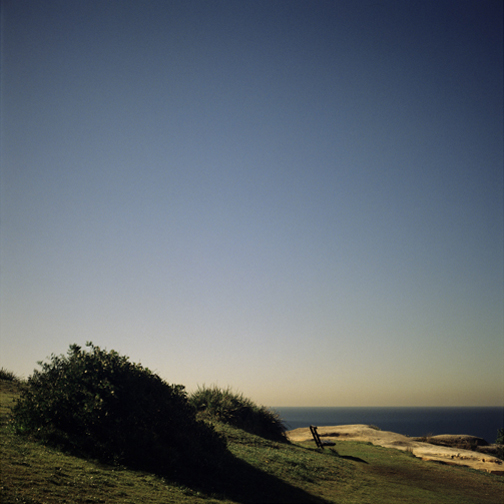
| Trace, 1997 |
| Accumulated Time |
| Kim, SeungGon, 1997 |
Within visual range, we have tried to capture things which are faster, smaller, and farther away. They ask for more and more, and the photograph is an answer, men might have pass through time and space too fast. Knowledge about the world is much less than information on time, yet we seem to fail to notice. The mechanism of the camera has been improved drastically, but this is meaningless to Park, HongChun. He chooses films and exposures to catch the automatic nature of emulsion, not like normal photographers who choose their films and exposures to express their exact color. The important things to him are light, the time in which the light rays are accumulated, and the color which this time can produce. Like early photographers, he keeps his camera lens open until the emulsion has reflected sufficient light. His pictures remind us the fact that a photograph is made with light and elapsed time. One could say that his picture starts from the origin of the photograph. He is a silent photographer. It is not hard to imagine him waiting for a long time, feeling the seconds passing, near his camera. During his waiting, how far can the light move? It must be an unrealistic distance beyond human imagination. His choice of ‘pinhole cameras’ has been consistent. He took a picture of the sea, but in th The technique is very simple. All it takes are low-speed films, a filter that moderates the light, long exposure and patience. Through the lens, the light fills the emulsion with invisible energy. Time would be melted into the landscape at very slow speed. Light compresses time and expand the character of the emulsion. He makes time a material and give it weight. But his pictures show that than time has been transformed. The more time elapsed, the fewer impurities left in the frames, only purity is left. Thus people may see farther and deeper into a space beyond reality, space mixed with this and the other world. In his pictures, time retrogresses. He wanders in the cave of time looking for his ephemeral memory. His arts are the records of his long and lonely exploration, and the screen of his paramnesia. |
Color is as important as time in his art. From the beginning, he had obtained the intended special colors through the long exposure and reciprocity law. Therefore, one can assume that he is very interested about the material characteristics of the photograph. The most impressive point of his photograph is the color, which seems like screaming overwhelmed by time. The color is faded, as if corroded by time. The color seems to lie on the borderline between reality and unreality, between tangibility and sensitivity. The color reminds one death, which is a taboo. It is a dark, heavy blue with a red tint, reminding one of the blue of Yves Klien and the color of blood as expressed by Andreas Cerano. When looking at the faded sky, one may hear a sublime requiem coming from inside some ruins. Unreasonable regret and sweet pain tighten the heart. We are trained to think according to our visual information. In other word, the more visual information within a picture, the narrower space for human thought. In his pictures, all live movement, even human movement, disapears like a ghost through long exposures, with an extreamly small quantity of information left as a trail. It is not knowledge that conveys the correct expression, but imagenation. He wanders several days to find object to form the image of which he had imagined. The benches are meaningful when found by his eyes. Although there could be some element of casualness, his pictures are the inevitable consequence of the photographer’s will. He has taken photographs in strange spots in Japan and Austrailia, amusement parks and symbolic buildings. His landscape is located inside himself. Nevertheless, his choice of strange locations makes one think that he regards highly strange feelings that are produced in strange spots. In other words, he does not see the foreign landscape, rather he sees the ‘aura’ of what the place is. His recent pictures have the sensitivity of ‘landscape’ : vast lands in strange countries. He must have been lonely, but then he had enough time to look into his heart. Or it could be the memory of his mother who passed away a long time ago. Thus, in his pictures, land which contains the liquidity of the sea heavily overwhelems the pictures. I could recognize his picture from among many other photographers, regardless of how many. There will be no drastic change in his style because during his 10 years of work, he had found the answers to the essence of the photograph, which are color and time, and he has the task of complete his style.
Originally published as: PARK HONG-CHUN, Seoul: Samtuh Art Books, 1997. Kim, SeungGon is a photography critic and the porfessor of photographic arts at Sunchon National University. He has been the jury president of Sajin Bipyong Awards since 1999.
|